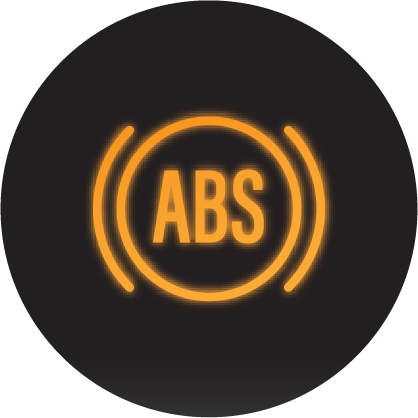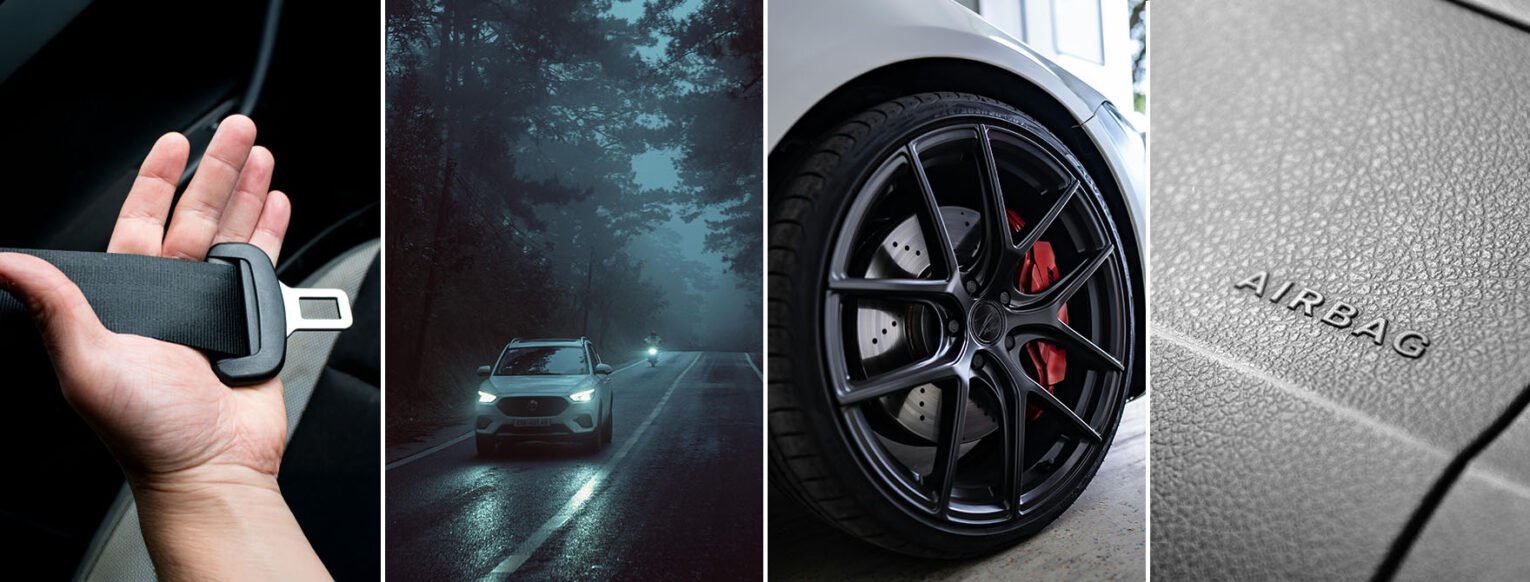Cars today are equipped with lots of different safety features to make driving safer for you, your passengers, and other drivers on the road. Like all parts of your car, it’s important to maintain these features so they will work properly if needed. In this article, we’ll cover 5 important safety features, what they do, and when they need to be repaired or replaced.
Anti-lock Brakes
Anti-lock brakes, sometimes called ABS for short, are a type of brake included in most newer vehicles. Your car’s ABS system works to increase controlled braking on slippery roads. Without ABS, brakes can lock and skid, especially in wet conditions. ABS keeps brakes from locking by pulsing the brakes several times per second when activated. There are four basic components to an ABS system: the speed sensor, the controller, the valves, and the pump.

If any of these components wear down or break, your dashboard may warn you with the ABS light. Other signs to watch out for include a low brake pedal, unpredictable braking, locked brakes, a failing speedometer, and an overall decrease in braking performance. Anti-lock brakes are important for safe driving in rain, fog, ice, or snow, so if your car’s ABS needs repairs, call a mechanic as soon as possible.
Seatbelts
Seatbelts help to keep you properly seated while your vehicle is in motion. They can also help to prevent serious or fatal injuries in the event of a crash. Seatbelts are designed to prevent ejectment. It is almost always deadly to be fully ejected from a vehicle during a crash. The National Highway Traffic Safety Administration has found that seatbelts reduce the risk of a fatal injury by 45% and they reduce the risk of a moderate to critical injury by 50%.
When you’re purchasing a car, you should test the seatbelt to make sure it’s a good fit for you. Most manufacturers offer seatbelt extenders, and older vehicles with lap belts can be refitted with the safer lap and shoulder belt that has been standardized in most newer cars. Make sure to check your seatbelt for frays and tears, a damaged buckle, poor belt retraction, twisting, and rust or corrosion. All of these things can indicate that you need to repair or replace your seatbelt. You should also have seatbelts inspected after your vehicle has been in a collision.
Airbags
NHTSA estimates that airbags saved over 50,000 lives between the years of 1987 and 2017. Airbags work to reduce the chance of your upper body or head striking your car’s interior during a crash. They are designed to work with seatbelts, not instead of seatbelts. You will get the best protection from a combination of airbags and seatbelts. It’s important to note that children under the age of 13 should sit in the back of the vehicle as they can sustain injuries from airbags in the front of the vehicle.
In most cases, airbags don’t need to be replaced unless they’ve been deployed. They’re supposed to last for the life of the vehicle. Cars from the early 2000s to now most likely won’t need a replacement. Cars from the 1990s or older should have airbags replaced or at least inspected every 10 to 15 years to ensure they’re in good shape.
Headlights
Headlights are an important safety feature that can affect your safety and the safety of other cars around you. Headlights provide better visibility when driving at night. They also serve to make your car more visible in the fog and the rain. Headlights that are properly lit and aimed will cut down on glare and light up the road without distracting oncoming drivers.
Here are some signs that you need to replace your headlights:
- Flickering lightbulbs
- Cracks or damage
- Uneven lighting
- Decreased brightness
- Blown headlight fuses
- Yellowed or foggy headlights
- Broken high beams
It’s a good idea to test all the lights on your vehicle on a regular basis. Check your headlights, your high beams, your taillights, your brake lights, and your turn signals.
ADAS
ADAS, also known as Advanced Driver Assistance Systems, are features that have been programmed into newer cars to help increase safe driving. Some examples of ADAS include adaptive cruise control, anti-lock brakes, blind spot detection, high beam safety systems, forward and rear collision warning, lane departure warning, and traction control. ADAS relies on precise calibration to work properly.
You may need to have your ADAS recalibrated if you’ve been in a collision. Whether it’s a minor fender bender or a major crash, any type of collision can throw off the system. You may also need to recalibrate your ADAS after having certain repairs or replacements made, like body work.
Call Restored Auto, LLC for maintenance.
If one of your vehicle’s safety features needs to be repaired or replaced, Restored Auto, LLC is here to help. We offer a wide range of services to keep your car working properly. Give us a call today to schedule your ADAS recalibration, ABS repair, headlight replacement, or other safety feature maintenance.

